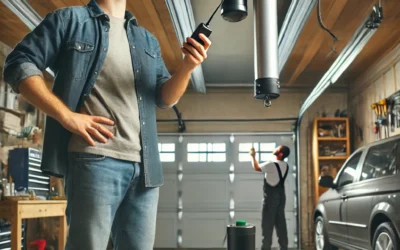BlogS
OT Table Height Adjustment using Electric Linear Actuator
In modern operating theaters, precision and efficiency are paramount. Surgeons and medical staff require equipment that enhances ergonomics, patient comfort, and procedural accuracy. One crucial element of this is the Operating Table (OT) height adjustment mechanism....
Container House Door and Window open close system using Electric linear Actuator
Container house are becoming increasingly popular due to their affordability, sustainability, and versatility. One of the key aspects of enhancing a container home's functionality is automating its doors and windows. A great way to achieve this is by using electric...
How to Push and Pull an Object with an Electric Linear Actuator
Electric linear actuators are widely used in automation, robotics, and mechanical applications to move objects with precision. Whether you are building a home automation system or an industrial machine, understanding how to use a linear actuator to push and pull...
Six Actuators Push and Pull System with Customized Control Unit
In the world of automation and precision control, actuator systems play a crucial role in ensuring smooth, synchronized movement. A six actuators push and pull system offers enhanced functionality, allowing for precise linear motion in various industrial and...
Linear Actuator in the Healthcare Industry
In healthcare, linear actuator help adjust hospital beds, dental chairs, and patient lifts. They enable smooth, precise movement to improve comfort and accessibility. For example, they let beds tilt or raise safely, aiding patient care and recovery with ease. Buy Now...
Application of Linear Actuator in the Hot Oil Titling Field
User: Hey, I need some advice. We're working on a project where we need to tilt a hot oil container for pouring. Someone suggested using a linear actuator. Have you worked on something like this before? Solution Expert: Oh, absolutely. Linear actuators are a great...
Frequently Asked Questions(FAQ)
What is a linear actuator?
A linear actuator is a device that converts rotational motion into linear motion. It is used to move objects in a straight line
What are the benefits of using a linear actuator?
The benefits of using a linear actuator include precise and controlled linear motion, compact size, easy installation, and efficiency.
How do I install and maintain my linear actuator?
The installation and maintenance of a linear actuator will depend on the specific model and type. Refer to the manufacturer’s instructions for installation and maintenance guidelines.
What safety precautions should I take when working with linear actuators?
Always follow the manufacturer’s instructions and safety guidelines when working with linear actuators. Ensure that the actuator is properly secured and that the power source is disconnected before working on the actuator.
What is the difference between a linear actuator and a rotary actuator?
A linear actuator moves in a straight line, while a rotary actuator rotates around an axis. Linear actuators are used when linear motion is required, whereas rotary actuators are used when rotational motion is needed.
What is the difference between an electric linear actuator and a hydraulic linear actuator?
An electric linear actuator uses electrical energy to create linear motion, while a hydraulic linear actuator uses pressurized hydraulic fluid to create linear motion. Electric linear actuators are typically easier to install and maintain, while hydraulic linear actuators can generate higher force.
Can a linear actuator be used for precise positioning?
Yes, linear actuators are often used for precise positioning due to their ability to provide accurate and repeatable linear motion.
How do I determine the stroke length of a linear actuator?
The stroke length of a linear actuator is the distance the actuator can travel in a straight line. To determine the required stroke length, consider the distance the actuator needs to move to complete its intended task.
What are some common materials used to make linear actuators?
Linear actuators can be made from a variety of materials, including aluminum, stainless steel, plastic, and carbon fiber. The choice of material will depend on the specific application and environmental conditions.
Can a linear actuator be used in hazardous environments?
Yes, some linear actuators are designed for use in hazardous environments and are made from materials that can withstand exposure to extreme temperatures, chemicals, or other hazardous conditions.
Can a linear actuator be customized to fit my specific application?
Yes, many manufacturers offer customized linear actuators to fit specific applications. These can include modifications to stroke length, force, speed, mounting options, and environmental protection.






